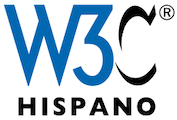- From: Luis Meijueiro <luis.meijueiro@w3.org>
- Date: Thu, 30 May 2024 08:53:14 +0200
- To: Manu Sporny <msporny@digitalbazaar.com>
- Cc: W3C Credentials CG <public-credentials@w3.org>
- Message-Id: <825FDB71-8703-4522-AD3B-8250FBCD6E91@w3.org>
Dear Manu and all, I find it an interesting piece of work, but one that is done little favours by sensationalist FUD-style statements in the vein of ‘The result of the lack of barcode security has resulted in a large global market for fraudulent documents, which are then used to open fraudulent lines of credit that fund illicit activity or purchase alcohol for underage individuals". That reminds me a lot of saying that blockchain is a flawed technology, because it is used in bitcoin, which in itself is used to buy drugs, weapons and money laundering (as if most money laundering was not based on fiat currency). I encourage toning down the argumentative discourse a notch or two. IMHO no single technology is guilty of anything, specially taken out of the context of interaction with other technological and human mechanisms of control in which it is being applied. Otherwise I support the research. Cheers, Luis MEIJUEIRO luis.meijueiro@w3.org  CTIC Centro Tecnológico C/ Ada Byron, 39 | 33203 Gijón | Asturias | España (Spain) Ph: (+34) 984 291 212 Ext. 810 > El 30 may 2024, a las 0:04, Manu Sporny <msporny@digitalbazaar.com> escribió: > > This is a new work item proposal for the W3C Credentials Community > Group called "Verifiable Barcodes". > > During last week's DHS Demo Week, it was announced that this > technology is being integrated into the physical California Driver's > License (27 million+ people) as well as various U.S. federally issued > identification documents (14 million+ people) such as the U.S. > Citizenship and Immigration Services' Permanent Resident Cards, > Employment Authorization Documents, and Citizenship Certificates. It > is built on W3C Verifiable Credentials and W3C Data Integrity. > > Please see the proposal here and provide input if you'd like: > > https://github.com/w3c-ccg/community/issues/248 > > We are seeking additional Editors for the work item before it is > adopted by the Credentials Community Group. If you are interested, > please let us know via the mailing list or the issue tracker link > (above). > > ## Link to Abstract > > https://digitalbazaar.github.io/verifiable-barcodes/#abstract > > This specification describes a mechanism to protect legacy optical > barcodes, such as those found on driver's licenses (PDF417) and travel > documents (MRZ), using W3C Verifiable Credentials. The Verifiable > Credential representations are compact enough such that they fit in > under 150 bytes and can thus be integrated with traditional > two-dimensional barcodes that are printed on physical cards, or paper, > using legacy printing processes. > > ## List Owners > > * @wes-smith @msporny @dlongley > > ## Work Item Questions > >> 1. Explain what you are trying to do using no jargon or acronyms. > > We are securing the 2D barcodes found on physical documents such as > Driver's Licenses, employment authorization documents, and permanent > resident cards using W3C Verifiable Credential technology. > >> 2. How is it done today, and what are the limits of the current practice? > > Most 2D barcodes found on physical documents today, such as driver's > licenses, are not secured using cryptography. This means that anyone > can generate a fraudulent barcode using commonly available technology > and no mechanism exists to verify the data encoded on most > identification documents. > > The result of the lack of barcode security has resulted in a large > global market for fraudulent documents, which are then used to open > fraudulent lines of credit that fund illicit activity or purchase > alcohol for underage individuals. In the United States, over [32% of > college-aged individuals own a fake > ID](https://www.ncbi.nlm.nih.gov/pmc/articles/PMC2711502/) for the > purposes of buying alcohol resulting in 24% of all underage deaths > between the ages of 15-20. > >> 3. What is new in your approach and why do you think it will be successful? > > We secure the 2D barcode with a digital signature that can be verified > using a commodity smartphone or other broadly available hardware and > software. This enables fake documents to be identified far more easily > than what is possible today. > >> 5. How are you involving participants from multiple skill sets and global locations in this work item? (Skill sets: technical, design, product, marketing, anthropological, and UX. Global locations: the Americas, APAC, Europe, Middle East.) > > We have involved the retail industry, as well as federal and state > governments in the work. This includes policy analysis, technical > analysis, privacy analysis, and accessibility analysis. We continue to > seek engagement in these areas by making this a W3C CCG work item, > which has many people, across many industries and countries, involved > in the vetting of the work items. We do also plan to take this > standards track to ensure further analysis before the technology > becomes broadly available to global society. > >> 6. What actions are you taking to make this work item accessible to a non-technical audience? > > We are providing websites that individuals can use to try out the > technology and provide feedback. We are presenting the work at > in-person conferences and teleconferences. > > We'll send a separate email with demo instructions such that anyone on > the mailing list can take this new technology for a spin. > > If you have any questions on this work item, we'd be happy to answer them. :) > > -- manu > > -- > Manu Sporny - https://www.linkedin.com/in/manusporny/ > Founder/CEO - Digital Bazaar, Inc. > https://www.digitalbazaar.com/ >
Attachments
- text/html attachment: stored
- image/png attachment: w3c-hispano-v2_firma.png

Received on Thursday, 30 May 2024 07:24:06 UTC